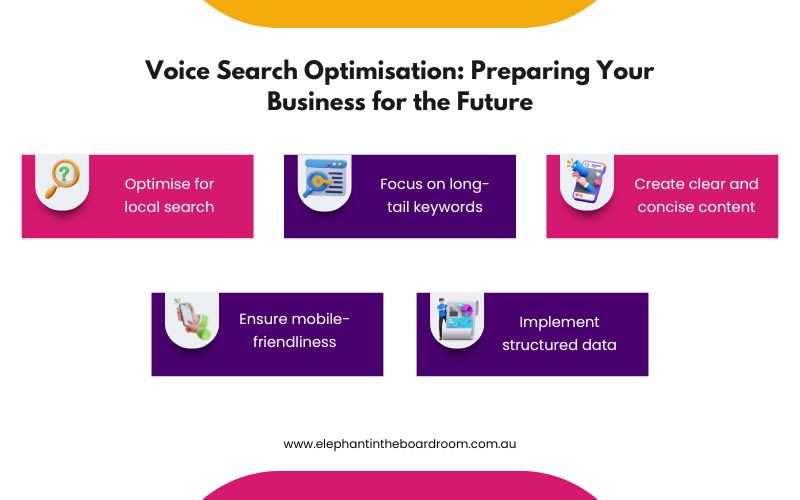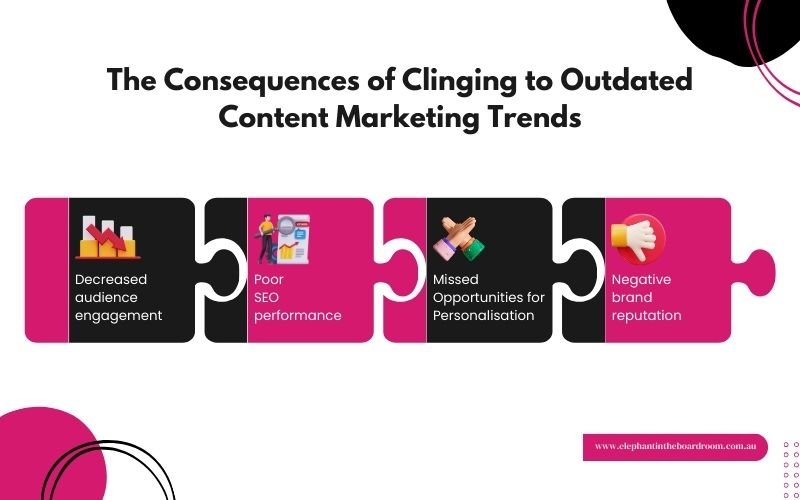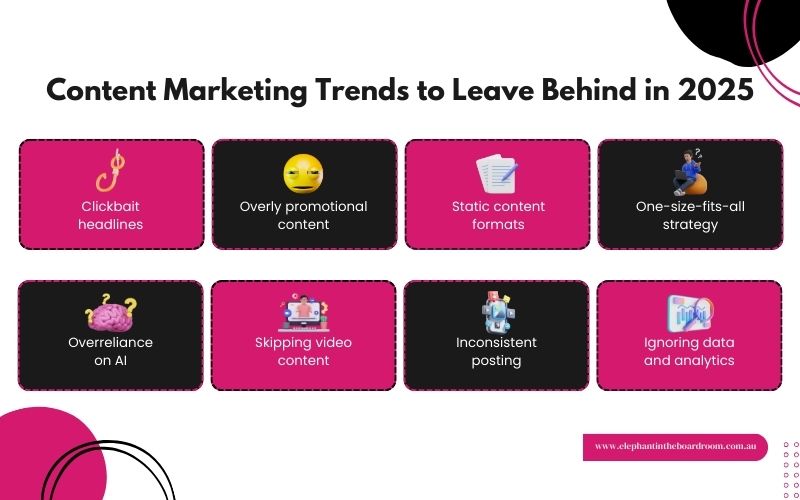
"Hey Google, where is the best local business near me?” Sounds familiar? Well, you are already living in the age of voice search. It is quick, convenient, and changing the game for how people interact with technology and businesses. With smart speakers in homes and voice assistants in every pocket, more people are speaking their searches instead of typing them. That shift is shaping a new kind of online visibility, and voice search optimisation is becoming essential if you want your business to stay discoverable.
This blog is your wake-up call. We are diving into how voice search optimisation is reshaping the way customers discover brands, and more importantly, how your business can be ready for it. Keep reading, because the way people search is changing fast… and you don’t want to be left behind.
What’s Inside:
- The Rise of Voice Search: Trends and Statistics
- How Voice Search Differs from Traditional Search?
- Voice Search Optimisation: Preparing Your Business for the Future
- Future-Proof Your Brand with Voice Search Optimisation
The Rise of Voice Search: Trends and Statistics
Voice search is a technology that allows users to perform searches on the internet by speaking into a device, such as a smartphone or smart speaker, rather than typing. This hands-free method leverages voice recognition software to interpret spoken commands and queries, providing quick and convenient access to information.
In Australia, the adoption of voice search is on the rise. Recent statistics indicate that nearly 40% of Australian households own a smart speaker, with Google Home leading at 31%, followed by Amazon Echo at 21% and Apple HomePod at 19%.
Furthermore, 90% of users find voice search faster and more convenient than traditional typing. This growing preference for voice-activated technology underscores the importance for businesses to optimise their digital presence for voice search.
How Voice Search Differs from Traditional Search?

We have all done it, called out to Siri, Alexa or Google Assistant while making dinner, driving, or just being too lazy to type. Voice search is now part of our everyday lives, but it works quite differently from the good old-fashioned way of typing into a search bar.
Here’s how voice search stacks up against traditional search:
It is More Conversational
When we type, we tend to use short, snappy keywords like “weather Melbourne” or “best coffee near me.” But when we speak, it sounds more like, “Hey Google, what’s the weather like in Melbourne today?” Voice searches are more natural and often phrased as full questions.
Intent is Clearer
Because voice searches are usually longer and more detailed, they give search engines a better sense of intent. This helps Google serve more specific results. For businesses, it means optimising for long-tail keywords and answering common customer questions can give you a big edge.
Faster and Hands-free
The biggest driver of voice search? Convenience. People use it when they are multitasking, walking, driving, cooking, or even brushing their teeth. That means search results need to be quick, clear, and easy to digest, ideally read aloud in a few seconds.
Relies on Featured Snippets
Voice search relies heavily on featured snippets and properly marked-up data. If your site is well-optimised and structured, your chances of being the spoken answer go way up.
Voice Search Optimisation: Preparing Your Business for the Future

If your website isn’t geared for voice search, it’s time to catch up. Here’s what you need to know to make your business easier to find by voice.
Optimise for Local Search
Many voice searches are local in nature, like "Find a plumber near me." Ensure your business is listed accurately on platforms like Google Business Profile, and include local keywords in your website content to enhance your local SEO.
Focus on Long-Tail Keywords
Specific phrases that users are more likely to speak are essential for voice search optimisation. These keywords often reflect the natural questions people ask, such as "How do I fix a leaky tap?" Integrating these into your content can improve your visibility in voice search results.
Create Clear and Concise Content
Voice assistants aim to provide quick answers. Structure your content to answer common questions directly and succinctly. Using FAQ sections can be particularly effective in addressing specific queries.
Ensure Mobile-Friendliness
Given that many voice searches occur on mobile devices, having a mobile-optimised website is important. A responsive design that loads quickly can enhance user experience and improve your search rankings.
Implement Structured Data
Using schema markup helps search engines understand your website content better, increasing the chances of being featured in voice search results. This structured data can highlight important information like business hours, reviews, and services offered.
Future-Proof Your Brand with Voice Search Optimisation
Voice search optimisation isn’t something to leave for later, it is happening now. If your business isn’t already preparing for this shift, you are at risk of falling behind. Elephant in the Boardroom makes voice search optimisation feel simple, strategic, and tailored to your audience, so you are ready for the way people search today and tomorrow.
Want to stay competitive and relevant in a fast-changing digital space? Let’s chat. Our team can help you kickstart a voice search optimisation strategy that sets your business apart and puts you in front of the right people, at the right time, just by asking.

"Hey Google, where is the best local business near me?” Sounds familiar? Well, you are already living in the age of voice search. It is quick, convenient, and changing the game for how people interact with technology and businesses. With smart speakers in homes and voice assistants in every pocket, more people are speaking their searches instead of typing them. That shift is shaping a new kind of online visibility, and voice search optimisation is becoming essential if you want your business to stay discoverable.
This blog is your wake-up call. We are diving into how voice search optimisation is reshaping the way customers discover brands, and more importantly, how your business can be ready for it. Keep reading, because the way people search is changing fast… and you don’t want to be left behind.
What’s Inside:
- The Rise of Voice Search: Trends and Statistics
- How Voice Search Differs from Traditional Search?
- Voice Search Optimisation: Preparing Your Business for the Future
- Future-Proof Your Brand with Voice Search Optimisation
The Rise of Voice Search: Trends and Statistics
Voice search is a technology that allows users to perform searches on the internet by speaking into a device, such as a smartphone or smart speaker, rather than typing. This hands-free method leverages voice recognition software to interpret spoken commands and queries, providing quick and convenient access to information.
In Australia, the adoption of voice search is on the rise. Recent statistics indicate that nearly 40% of Australian households own a smart speaker, with Google Home leading at 31%, followed by Amazon Echo at 21% and Apple HomePod at 19%.
Furthermore, 90% of users find voice search faster and more convenient than traditional typing. This growing preference for voice-activated technology underscores the importance for businesses to optimise their digital presence for voice search.
How Voice Search Differs from Traditional Search?

We have all done it, called out to Siri, Alexa or Google Assistant while making dinner, driving, or just being too lazy to type. Voice search is now part of our everyday lives, but it works quite differently from the good old-fashioned way of typing into a search bar.
Here’s how voice search stacks up against traditional search:
It is More Conversational
When we type, we tend to use short, snappy keywords like “weather Melbourne” or “best coffee near me.” But when we speak, it sounds more like, “Hey Google, what’s the weather like in Melbourne today?” Voice searches are more natural and often phrased as full questions.
Intent is Clearer
Because voice searches are usually longer and more detailed, they give search engines a better sense of intent. This helps Google serve more specific results. For businesses, it means optimising for long-tail keywords and answering common customer questions can give you a big edge.
Faster and Hands-free
The biggest driver of voice search? Convenience. People use it when they are multitasking, walking, driving, cooking, or even brushing their teeth. That means search results need to be quick, clear, and easy to digest, ideally read aloud in a few seconds.
Relies on Featured Snippets
Voice search relies heavily on featured snippets and properly marked-up data. If your site is well-optimised and structured, your chances of being the spoken answer go way up.
Voice Search Optimisation: Preparing Your Business for the Future

If your website isn’t geared for voice search, it’s time to catch up. Here’s what you need to know to make your business easier to find by voice.
Optimise for Local Search
Many voice searches are local in nature, like "Find a plumber near me." Ensure your business is listed accurately on platforms like Google Business Profile, and include local keywords in your website content to enhance your local SEO.
Focus on Long-Tail Keywords
Specific phrases that users are more likely to speak are essential for voice search optimisation. These keywords often reflect the natural questions people ask, such as "How do I fix a leaky tap?" Integrating these into your content can improve your visibility in voice search results.
Create Clear and Concise Content
Voice assistants aim to provide quick answers. Structure your content to answer common questions directly and succinctly. Using FAQ sections can be particularly effective in addressing specific queries.
Ensure Mobile-Friendliness
Given that many voice searches occur on mobile devices, having a mobile-optimised website is important. A responsive design that loads quickly can enhance user experience and improve your search rankings.
Implement Structured Data
Using schema markup helps search engines understand your website content better, increasing the chances of being featured in voice search results. This structured data can highlight important information like business hours, reviews, and services offered.
Future-Proof Your Brand with Voice Search Optimisation
Voice search optimisation isn’t something to leave for later, it is happening now. If your business isn’t already preparing for this shift, you are at risk of falling behind. Elephant in the Boardroom makes voice search optimisation feel simple, strategic, and tailored to your audience, so you are ready for the way people search today and tomorrow.
Want to stay competitive and relevant in a fast-changing digital space? Let’s chat. Our team can help you kickstart a voice search optimisation strategy that sets your business apart and puts you in front of the right people, at the right time, just by asking.

"Hey Google, where is the best local business near me?” Sounds familiar? Well, you are already living in the age of voice search. It is quick, convenient, and changing the game for how people interact with technology and businesses. With smart speakers in homes and voice assistants in every pocket, more people are speaking their searches instead of typing them. That shift is shaping a new kind of online visibility, and voice search optimisation is becoming essential if you want your business to stay discoverable.
This blog is your wake-up call. We are diving into how voice search optimisation is reshaping the way customers discover brands, and more importantly, how your business can be ready for it. Keep reading, because the way people search is changing fast… and you don’t want to be left behind.
What’s Inside:
- The Rise of Voice Search: Trends and Statistics
- How Voice Search Differs from Traditional Search?
- Voice Search Optimisation: Preparing Your Business for the Future
- Future-Proof Your Brand with Voice Search Optimisation
The Rise of Voice Search: Trends and Statistics
Voice search is a technology that allows users to perform searches on the internet by speaking into a device, such as a smartphone or smart speaker, rather than typing. This hands-free method leverages voice recognition software to interpret spoken commands and queries, providing quick and convenient access to information.
In Australia, the adoption of voice search is on the rise. Recent statistics indicate that nearly 40% of Australian households own a smart speaker, with Google Home leading at 31%, followed by Amazon Echo at 21% and Apple HomePod at 19%.
Furthermore, 90% of users find voice search faster and more convenient than traditional typing. This growing preference for voice-activated technology underscores the importance for businesses to optimise their digital presence for voice search.
How Voice Search Differs from Traditional Search?

We have all done it, called out to Siri, Alexa or Google Assistant while making dinner, driving, or just being too lazy to type. Voice search is now part of our everyday lives, but it works quite differently from the good old-fashioned way of typing into a search bar.
Here’s how voice search stacks up against traditional search:
It is More Conversational
When we type, we tend to use short, snappy keywords like “weather Melbourne” or “best coffee near me.” But when we speak, it sounds more like, “Hey Google, what’s the weather like in Melbourne today?” Voice searches are more natural and often phrased as full questions.
Intent is Clearer
Because voice searches are usually longer and more detailed, they give search engines a better sense of intent. This helps Google serve more specific results. For businesses, it means optimising for long-tail keywords and answering common customer questions can give you a big edge.
Faster and Hands-free
The biggest driver of voice search? Convenience. People use it when they are multitasking, walking, driving, cooking, or even brushing their teeth. That means search results need to be quick, clear, and easy to digest, ideally read aloud in a few seconds.
Relies on Featured Snippets
Voice search relies heavily on featured snippets and properly marked-up data. If your site is well-optimised and structured, your chances of being the spoken answer go way up.
Voice Search Optimisation: Preparing Your Business for the Future

If your website isn’t geared for voice search, it’s time to catch up. Here’s what you need to know to make your business easier to find by voice.
Optimise for Local Search
Many voice searches are local in nature, like "Find a plumber near me." Ensure your business is listed accurately on platforms like Google Business Profile, and include local keywords in your website content to enhance your local SEO.
Focus on Long-Tail Keywords
Specific phrases that users are more likely to speak are essential for voice search optimisation. These keywords often reflect the natural questions people ask, such as "How do I fix a leaky tap?" Integrating these into your content can improve your visibility in voice search results.
Create Clear and Concise Content
Voice assistants aim to provide quick answers. Structure your content to answer common questions directly and succinctly. Using FAQ sections can be particularly effective in addressing specific queries.
Ensure Mobile-Friendliness
Given that many voice searches occur on mobile devices, having a mobile-optimised website is important. A responsive design that loads quickly can enhance user experience and improve your search rankings.
Implement Structured Data
Using schema markup helps search engines understand your website content better, increasing the chances of being featured in voice search results. This structured data can highlight important information like business hours, reviews, and services offered.
Future-Proof Your Brand with Voice Search Optimisation
Voice search optimisation isn’t something to leave for later, it is happening now. If your business isn’t already preparing for this shift, you are at risk of falling behind. Elephant in the Boardroom makes voice search optimisation feel simple, strategic, and tailored to your audience, so you are ready for the way people search today and tomorrow.
Want to stay competitive and relevant in a fast-changing digital space? Let’s chat. Our team can help you kickstart a voice search optimisation strategy that sets your business apart and puts you in front of the right people, at the right time, just by asking.

"Hey Google, where is the best local business near me?” Sounds familiar? Well, you are already living in the age of voice search. It is quick, convenient, and changing the game for how people interact with technology and businesses. With smart speakers in homes and voice assistants in every pocket, more people are speaking their searches instead of typing them. That shift is shaping a new kind of online visibility, and voice search optimisation is becoming essential if you want your business to stay discoverable.
This blog is your wake-up call. We are diving into how voice search optimisation is reshaping the way customers discover brands, and more importantly, how your business can be ready for it. Keep reading, because the way people search is changing fast… and you don’t want to be left behind.
What’s Inside:
- The Rise of Voice Search: Trends and Statistics
- How Voice Search Differs from Traditional Search?
- Voice Search Optimisation: Preparing Your Business for the Future
- Future-Proof Your Brand with Voice Search Optimisation
The Rise of Voice Search: Trends and Statistics
Voice search is a technology that allows users to perform searches on the internet by speaking into a device, such as a smartphone or smart speaker, rather than typing. This hands-free method leverages voice recognition software to interpret spoken commands and queries, providing quick and convenient access to information.
In Australia, the adoption of voice search is on the rise. Recent statistics indicate that nearly 40% of Australian households own a smart speaker, with Google Home leading at 31%, followed by Amazon Echo at 21% and Apple HomePod at 19%.
Furthermore, 90% of users find voice search faster and more convenient than traditional typing. This growing preference for voice-activated technology underscores the importance for businesses to optimise their digital presence for voice search.
How Voice Search Differs from Traditional Search?

We have all done it, called out to Siri, Alexa or Google Assistant while making dinner, driving, or just being too lazy to type. Voice search is now part of our everyday lives, but it works quite differently from the good old-fashioned way of typing into a search bar.
Here’s how voice search stacks up against traditional search:
It is More Conversational
When we type, we tend to use short, snappy keywords like “weather Melbourne” or “best coffee near me.” But when we speak, it sounds more like, “Hey Google, what’s the weather like in Melbourne today?” Voice searches are more natural and often phrased as full questions.
Intent is Clearer
Because voice searches are usually longer and more detailed, they give search engines a better sense of intent. This helps Google serve more specific results. For businesses, it means optimising for long-tail keywords and answering common customer questions can give you a big edge.
Faster and Hands-free
The biggest driver of voice search? Convenience. People use it when they are multitasking, walking, driving, cooking, or even brushing their teeth. That means search results need to be quick, clear, and easy to digest, ideally read aloud in a few seconds.
Relies on Featured Snippets
Voice search relies heavily on featured snippets and properly marked-up data. If your site is well-optimised and structured, your chances of being the spoken answer go way up.
Voice Search Optimisation: Preparing Your Business for the Future

If your website isn’t geared for voice search, it’s time to catch up. Here’s what you need to know to make your business easier to find by voice.
Optimise for Local Search
Many voice searches are local in nature, like "Find a plumber near me." Ensure your business is listed accurately on platforms like Google Business Profile, and include local keywords in your website content to enhance your local SEO.
Focus on Long-Tail Keywords
Specific phrases that users are more likely to speak are essential for voice search optimisation. These keywords often reflect the natural questions people ask, such as "How do I fix a leaky tap?" Integrating these into your content can improve your visibility in voice search results.
Create Clear and Concise Content
Voice assistants aim to provide quick answers. Structure your content to answer common questions directly and succinctly. Using FAQ sections can be particularly effective in addressing specific queries.
Ensure Mobile-Friendliness
Given that many voice searches occur on mobile devices, having a mobile-optimised website is important. A responsive design that loads quickly can enhance user experience and improve your search rankings.
Implement Structured Data
Using schema markup helps search engines understand your website content better, increasing the chances of being featured in voice search results. This structured data can highlight important information like business hours, reviews, and services offered.
Future-Proof Your Brand with Voice Search Optimisation
Voice search optimisation isn’t something to leave for later, it is happening now. If your business isn’t already preparing for this shift, you are at risk of falling behind. Elephant in the Boardroom makes voice search optimisation feel simple, strategic, and tailored to your audience, so you are ready for the way people search today and tomorrow.
Want to stay competitive and relevant in a fast-changing digital space? Let’s chat. Our team can help you kickstart a voice search optimisation strategy that sets your business apart and puts you in front of the right people, at the right time, just by asking.

"Hey Google, where is the best local business near me?” Sounds familiar? Well, you are already living in the age of voice search. It is quick, convenient, and changing the game for how people interact with technology and businesses. With smart speakers in homes and voice assistants in every pocket, more people are speaking their searches instead of typing them. That shift is shaping a new kind of online visibility, and voice search optimisation is becoming essential if you want your business to stay discoverable.
This blog is your wake-up call. We are diving into how voice search optimisation is reshaping the way customers discover brands, and more importantly, how your business can be ready for it. Keep reading, because the way people search is changing fast… and you don’t want to be left behind.
What’s Inside:
- The Rise of Voice Search: Trends and Statistics
- How Voice Search Differs from Traditional Search?
- Voice Search Optimisation: Preparing Your Business for the Future
- Future-Proof Your Brand with Voice Search Optimisation
The Rise of Voice Search: Trends and Statistics
Voice search is a technology that allows users to perform searches on the internet by speaking into a device, such as a smartphone or smart speaker, rather than typing. This hands-free method leverages voice recognition software to interpret spoken commands and queries, providing quick and convenient access to information.
In Australia, the adoption of voice search is on the rise. Recent statistics indicate that nearly 40% of Australian households own a smart speaker, with Google Home leading at 31%, followed by Amazon Echo at 21% and Apple HomePod at 19%.
Furthermore, 90% of users find voice search faster and more convenient than traditional typing. This growing preference for voice-activated technology underscores the importance for businesses to optimise their digital presence for voice search.
How Voice Search Differs from Traditional Search?

We have all done it, called out to Siri, Alexa or Google Assistant while making dinner, driving, or just being too lazy to type. Voice search is now part of our everyday lives, but it works quite differently from the good old-fashioned way of typing into a search bar.
Here’s how voice search stacks up against traditional search:
It is More Conversational
When we type, we tend to use short, snappy keywords like “weather Melbourne” or “best coffee near me.” But when we speak, it sounds more like, “Hey Google, what’s the weather like in Melbourne today?” Voice searches are more natural and often phrased as full questions.
Intent is Clearer
Because voice searches are usually longer and more detailed, they give search engines a better sense of intent. This helps Google serve more specific results. For businesses, it means optimising for long-tail keywords and answering common customer questions can give you a big edge.
Faster and Hands-free
The biggest driver of voice search? Convenience. People use it when they are multitasking, walking, driving, cooking, or even brushing their teeth. That means search results need to be quick, clear, and easy to digest, ideally read aloud in a few seconds.
Relies on Featured Snippets
Voice search relies heavily on featured snippets and properly marked-up data. If your site is well-optimised and structured, your chances of being the spoken answer go way up.
Voice Search Optimisation: Preparing Your Business for the Future

If your website isn’t geared for voice search, it’s time to catch up. Here’s what you need to know to make your business easier to find by voice.
Optimise for Local Search
Many voice searches are local in nature, like "Find a plumber near me." Ensure your business is listed accurately on platforms like Google Business Profile, and include local keywords in your website content to enhance your local SEO.
Focus on Long-Tail Keywords
Specific phrases that users are more likely to speak are essential for voice search optimisation. These keywords often reflect the natural questions people ask, such as "How do I fix a leaky tap?" Integrating these into your content can improve your visibility in voice search results.
Create Clear and Concise Content
Voice assistants aim to provide quick answers. Structure your content to answer common questions directly and succinctly. Using FAQ sections can be particularly effective in addressing specific queries.
Ensure Mobile-Friendliness
Given that many voice searches occur on mobile devices, having a mobile-optimised website is important. A responsive design that loads quickly can enhance user experience and improve your search rankings.
Implement Structured Data
Using schema markup helps search engines understand your website content better, increasing the chances of being featured in voice search results. This structured data can highlight important information like business hours, reviews, and services offered.
Future-Proof Your Brand with Voice Search Optimisation
Voice search optimisation isn’t something to leave for later, it is happening now. If your business isn’t already preparing for this shift, you are at risk of falling behind. Elephant in the Boardroom makes voice search optimisation feel simple, strategic, and tailored to your audience, so you are ready for the way people search today and tomorrow.
Want to stay competitive and relevant in a fast-changing digital space? Let’s chat. Our team can help you kickstart a voice search optimisation strategy that sets your business apart and puts you in front of the right people, at the right time, just by asking.

"Hey Google, where is the best local business near me?” Sounds familiar? Well, you are already living in the age of voice search. It is quick, convenient, and changing the game for how people interact with technology and businesses. With smart speakers in homes and voice assistants in every pocket, more people are speaking their searches instead of typing them. That shift is shaping a new kind of online visibility, and voice search optimisation is becoming essential if you want your business to stay discoverable.
This blog is your wake-up call. We are diving into how voice search optimisation is reshaping the way customers discover brands, and more importantly, how your business can be ready for it. Keep reading, because the way people search is changing fast… and you don’t want to be left behind.
What’s Inside:
- The Rise of Voice Search: Trends and Statistics
- How Voice Search Differs from Traditional Search?
- Voice Search Optimisation: Preparing Your Business for the Future
- Future-Proof Your Brand with Voice Search Optimisation
The Rise of Voice Search: Trends and Statistics
Voice search is a technology that allows users to perform searches on the internet by speaking into a device, such as a smartphone or smart speaker, rather than typing. This hands-free method leverages voice recognition software to interpret spoken commands and queries, providing quick and convenient access to information.
In Australia, the adoption of voice search is on the rise. Recent statistics indicate that nearly 40% of Australian households own a smart speaker, with Google Home leading at 31%, followed by Amazon Echo at 21% and Apple HomePod at 19%.
Furthermore, 90% of users find voice search faster and more convenient than traditional typing. This growing preference for voice-activated technology underscores the importance for businesses to optimise their digital presence for voice search.
How Voice Search Differs from Traditional Search?

We have all done it, called out to Siri, Alexa or Google Assistant while making dinner, driving, or just being too lazy to type. Voice search is now part of our everyday lives, but it works quite differently from the good old-fashioned way of typing into a search bar.
Here’s how voice search stacks up against traditional search:
It is More Conversational
When we type, we tend to use short, snappy keywords like “weather Melbourne” or “best coffee near me.” But when we speak, it sounds more like, “Hey Google, what’s the weather like in Melbourne today?” Voice searches are more natural and often phrased as full questions.
Intent is Clearer
Because voice searches are usually longer and more detailed, they give search engines a better sense of intent. This helps Google serve more specific results. For businesses, it means optimising for long-tail keywords and answering common customer questions can give you a big edge.
Faster and Hands-free
The biggest driver of voice search? Convenience. People use it when they are multitasking, walking, driving, cooking, or even brushing their teeth. That means search results need to be quick, clear, and easy to digest, ideally read aloud in a few seconds.
Relies on Featured Snippets
Voice search relies heavily on featured snippets and properly marked-up data. If your site is well-optimised and structured, your chances of being the spoken answer go way up.
Voice Search Optimisation: Preparing Your Business for the Future

If your website isn’t geared for voice search, it’s time to catch up. Here’s what you need to know to make your business easier to find by voice.
Optimise for Local Search
Many voice searches are local in nature, like "Find a plumber near me." Ensure your business is listed accurately on platforms like Google Business Profile, and include local keywords in your website content to enhance your local SEO.
Focus on Long-Tail Keywords
Specific phrases that users are more likely to speak are essential for voice search optimisation. These keywords often reflect the natural questions people ask, such as "How do I fix a leaky tap?" Integrating these into your content can improve your visibility in voice search results.
Create Clear and Concise Content
Voice assistants aim to provide quick answers. Structure your content to answer common questions directly and succinctly. Using FAQ sections can be particularly effective in addressing specific queries.
Ensure Mobile-Friendliness
Given that many voice searches occur on mobile devices, having a mobile-optimised website is important. A responsive design that loads quickly can enhance user experience and improve your search rankings.
Implement Structured Data
Using schema markup helps search engines understand your website content better, increasing the chances of being featured in voice search results. This structured data can highlight important information like business hours, reviews, and services offered.
Future-Proof Your Brand with Voice Search Optimisation
Voice search optimisation isn’t something to leave for later, it is happening now. If your business isn’t already preparing for this shift, you are at risk of falling behind. Elephant in the Boardroom makes voice search optimisation feel simple, strategic, and tailored to your audience, so you are ready for the way people search today and tomorrow.
Want to stay competitive and relevant in a fast-changing digital space? Let’s chat. Our team can help you kickstart a voice search optimisation strategy that sets your business apart and puts you in front of the right people, at the right time, just by asking.

It's easy to get caught up in the idea that clinging to what has always worked is the safest route. But when it comes to content marketing trends, sticking to the old ways can hold you back from reaching new heights. What worked yesterday might be irrelevant tomorrow. And 2025 is the year to leave them behind to make room for smarter, more innovative approaches.
Not sure if your current approach is still hitting the mark? Don’t worry, you are not alone. We will walk through the trends that are better off left behind and help you see where your efforts might need a refresh. By the end, you will have a clearer idea of keeping your content relevant and your audience coming back for more. Let’s get started.
What’s Inside:
- The Growth of Content Marketing in Australia
- The Consequences of Clinging to Outdated Content Marketing Trends
- Content Marketing Trends to Leave Behind in 2025
- Be the Brand That Sets New Standards
The Growth of Content Marketing in Australia

If you are running a business in Australia or simply keeping an eye on trends, you might have noticed a clear and steady rise in content marketing activity over the past few years. But what exactly is behind this growth, and why should you care as a business owner or marketer in Australia?
In 2022, Australia saw around 537 businesses actively embracing content marketing. Fast forward to 2023, and that number jumped to 600, showing a strong increase. By 2024, it had reached 631, and projections for 2025 show the figure climbing to 658 businesses. This steady uptick in numbers clearly indicates that Australian companies recognise the undeniable power of content to engage audiences and deliver results.
The growth of content marketing in Australia is driven by the increasing demand for valuable, engaging, and informative content from consumers. With digital platforms dominating, you can connect with your audience more authentically and cost-effectively. Embracing content marketing trends helps you build trust, increase brand visibility, and drive long-term growth.
The Consequences of Clinging to Outdated Content Marketing Trends

Sticking to outdated content marketing trends can seriously hinder your business's growth. Here are the consequences of clinging to outdated content marketing trends:
Decreased Audience Engagement
Your audience’s expectations change over time. If you are still focusing on long-form blog posts or overly promotional content that doesn’t resonate with today’s demands for value-driven, interactive experiences, you risk losing their attention.
Poor SEO Performance
Search engine algorithms are constantly evolving to favour high-quality, relevant content. If you are sticking to keyword stuffing, outdated SEO tactics, or neglecting mobile-first design, your content will likely fall behind in search rankings.
Missed Opportunities for Personalisation
Relying on a one-size-fits-all strategy means you are missing the chance to leverage data and tools that enable personalisation. Today’s technology allows for highly targeted content that speaks directly to the interests of individual users.
Negative Brand Reputation
Consumers value brands that stay relevant, and seeing that your content is stuck in the past can make your company look out of touch. In a competitive digital market, staying relevant means staying updated.
Content Marketing Trends to Leave Behind in 2025

In 2025, certain trends are no longer effective, and holding on to them could hold back your growth. Here are the content marketing trends you should leave behind to ensure your strategy remains fresh and impactful:
Clickbait Headlines
While clickbait might have worked in the past to grab attention, it often leads to disappointment to readers when the content doesn't deliver. This strategy can harm your brand’s credibility and trust. This year, focus on creating compelling, honest headlines that give readers a clear idea of what they can expect.
Overly Promotional Content
Audiences today crave value, not constant sales pitches. Overly promotional content not only turns people off but can also hinder your engagement rates. Instead, focus on providing insights, solutions, and stories that naturally tie back to your products or services.
Static Content Formats
Static blog posts or simple text-based content are no longer enough. Interactive content like quizzes, polls, or calculators has been shown to increase engagement by up to 30%. People crave more dynamic experiences that allow them to engage, learn, and connect with your brand in meaningful ways.
One-Size-Fits-All Strategy
The cookie-cutter approach is no longer enough. Your audience is diverse, and each segment has different needs. Align your messaging, content, and offers to specific audience segments for more meaningful engagement.
Overreliance on AI
While AI tools can streamline processes, relying too heavily on them can lead to generic content that lacks a human touch. Balance AI assistance with authentic storytelling and creativity to maintain a genuine connection with your audience.
Skipping Video Content
Video continues to dominate as a preferred format for consuming information. Avoid neglecting this medium; instead, integrate video into your strategy to capture attention and convey messages more effectively.
Inconsistent Posting
Posting occasionally can make your brand appear disorganised or unreliable. Make sure you have a content calendar and stick to a regular posting schedule. Quality content posted consistently will keep your audience coming back for more.
Ignoring Data and Analytics
Data is king. Ignoring analytics in favour of gut feeling or trends can lead to missed opportunities. Use data to measure your content's performance, understand your audience's preferences, and optimise your strategy for better results. The more you track, the better you can refine your approach.
Be the Brand That Sets New Standards
Don’t let 2025 be a repeat of the past. It is time to stop recycling outdated tactics and start innovating with strategies that speak directly to your audience’s needs. The content marketing landscape is changing, and only those who embrace new approaches will thrive. Now is the moment to leave behind what is no longer working and create meaningful connections that drive real results.
Don’t let your brand fall behind. Elephant in the Boardroom is ready to help you break free from the past and step boldly into the future. Reach out today and let us build a content strategy that not only stands out but positions your brand for sustained success in 2025 and beyond.

It's easy to get caught up in the idea that clinging to what has always worked is the safest route. But when it comes to content marketing trends, sticking to the old ways can hold you back from reaching new heights. What worked yesterday might be irrelevant tomorrow. And 2025 is the year to leave them behind to make room for smarter, more innovative approaches.
Not sure if your current approach is still hitting the mark? Don’t worry, you are not alone. We will walk through the trends that are better off left behind and help you see where your efforts might need a refresh. By the end, you will have a clearer idea of keeping your content relevant and your audience coming back for more. Let’s get started.
What’s Inside:
- The Growth of Content Marketing in Australia
- The Consequences of Clinging to Outdated Content Marketing Trends
- Content Marketing Trends to Leave Behind in 2025
- Be the Brand That Sets New Standards
The Growth of Content Marketing in Australia

If you are running a business in Australia or simply keeping an eye on trends, you might have noticed a clear and steady rise in content marketing activity over the past few years. But what exactly is behind this growth, and why should you care as a business owner or marketer in Australia?
In 2022, Australia saw around 537 businesses actively embracing content marketing. Fast forward to 2023, and that number jumped to 600, showing a strong increase. By 2024, it had reached 631, and projections for 2025 show the figure climbing to 658 businesses. This steady uptick in numbers clearly indicates that Australian companies recognise the undeniable power of content to engage audiences and deliver results.
The growth of content marketing in Australia is driven by the increasing demand for valuable, engaging, and informative content from consumers. With digital platforms dominating, you can connect with your audience more authentically and cost-effectively. Embracing content marketing trends helps you build trust, increase brand visibility, and drive long-term growth.
The Consequences of Clinging to Outdated Content Marketing Trends

Sticking to outdated content marketing trends can seriously hinder your business's growth. Here are the consequences of clinging to outdated content marketing trends:
Decreased Audience Engagement
Your audience’s expectations change over time. If you are still focusing on long-form blog posts or overly promotional content that doesn’t resonate with today’s demands for value-driven, interactive experiences, you risk losing their attention.
Poor SEO Performance
Search engine algorithms are constantly evolving to favour high-quality, relevant content. If you are sticking to keyword stuffing, outdated SEO tactics, or neglecting mobile-first design, your content will likely fall behind in search rankings.
Missed Opportunities for Personalisation
Relying on a one-size-fits-all strategy means you are missing the chance to leverage data and tools that enable personalisation. Today’s technology allows for highly targeted content that speaks directly to the interests of individual users.
Negative Brand Reputation
Consumers value brands that stay relevant, and seeing that your content is stuck in the past can make your company look out of touch. In a competitive digital market, staying relevant means staying updated.
Content Marketing Trends to Leave Behind in 2025

In 2025, certain trends are no longer effective, and holding on to them could hold back your growth. Here are the content marketing trends you should leave behind to ensure your strategy remains fresh and impactful:
Clickbait Headlines
While clickbait might have worked in the past to grab attention, it often leads to disappointment to readers when the content doesn't deliver. This strategy can harm your brand’s credibility and trust. This year, focus on creating compelling, honest headlines that give readers a clear idea of what they can expect.
Overly Promotional Content
Audiences today crave value, not constant sales pitches. Overly promotional content not only turns people off but can also hinder your engagement rates. Instead, focus on providing insights, solutions, and stories that naturally tie back to your products or services.
Static Content Formats
Static blog posts or simple text-based content are no longer enough. Interactive content like quizzes, polls, or calculators has been shown to increase engagement by up to 30%. People crave more dynamic experiences that allow them to engage, learn, and connect with your brand in meaningful ways.
One-Size-Fits-All Strategy
The cookie-cutter approach is no longer enough. Your audience is diverse, and each segment has different needs. Align your messaging, content, and offers to specific audience segments for more meaningful engagement.
Overreliance on AI
While AI tools can streamline processes, relying too heavily on them can lead to generic content that lacks a human touch. Balance AI assistance with authentic storytelling and creativity to maintain a genuine connection with your audience.
Skipping Video Content
Video continues to dominate as a preferred format for consuming information. Avoid neglecting this medium; instead, integrate video into your strategy to capture attention and convey messages more effectively.
Inconsistent Posting
Posting occasionally can make your brand appear disorganised or unreliable. Make sure you have a content calendar and stick to a regular posting schedule. Quality content posted consistently will keep your audience coming back for more.
Ignoring Data and Analytics
Data is king. Ignoring analytics in favour of gut feeling or trends can lead to missed opportunities. Use data to measure your content's performance, understand your audience's preferences, and optimise your strategy for better results. The more you track, the better you can refine your approach.
Be the Brand That Sets New Standards
Don’t let 2025 be a repeat of the past. It is time to stop recycling outdated tactics and start innovating with strategies that speak directly to your audience’s needs. The content marketing landscape is changing, and only those who embrace new approaches will thrive. Now is the moment to leave behind what is no longer working and create meaningful connections that drive real results.
Don’t let your brand fall behind. Elephant in the Boardroom is ready to help you break free from the past and step boldly into the future. Reach out today and let us build a content strategy that not only stands out but positions your brand for sustained success in 2025 and beyond.

It's easy to get caught up in the idea that clinging to what has always worked is the safest route. But when it comes to content marketing trends, sticking to the old ways can hold you back from reaching new heights. What worked yesterday might be irrelevant tomorrow. And 2025 is the year to leave them behind to make room for smarter, more innovative approaches.
Not sure if your current approach is still hitting the mark? Don’t worry, you are not alone. We will walk through the trends that are better off left behind and help you see where your efforts might need a refresh. By the end, you will have a clearer idea of keeping your content relevant and your audience coming back for more. Let’s get started.
What’s Inside:
- The Growth of Content Marketing in Australia
- The Consequences of Clinging to Outdated Content Marketing Trends
- Content Marketing Trends to Leave Behind in 2025
- Be the Brand That Sets New Standards
The Growth of Content Marketing in Australia

If you are running a business in Australia or simply keeping an eye on trends, you might have noticed a clear and steady rise in content marketing activity over the past few years. But what exactly is behind this growth, and why should you care as a business owner or marketer in Australia?
In 2022, Australia saw around 537 businesses actively embracing content marketing. Fast forward to 2023, and that number jumped to 600, showing a strong increase. By 2024, it had reached 631, and projections for 2025 show the figure climbing to 658 businesses. This steady uptick in numbers clearly indicates that Australian companies recognise the undeniable power of content to engage audiences and deliver results.
The growth of content marketing in Australia is driven by the increasing demand for valuable, engaging, and informative content from consumers. With digital platforms dominating, you can connect with your audience more authentically and cost-effectively. Embracing content marketing trends helps you build trust, increase brand visibility, and drive long-term growth.
The Consequences of Clinging to Outdated Content Marketing Trends

Sticking to outdated content marketing trends can seriously hinder your business's growth. Here are the consequences of clinging to outdated content marketing trends:
Decreased Audience Engagement
Your audience’s expectations change over time. If you are still focusing on long-form blog posts or overly promotional content that doesn’t resonate with today’s demands for value-driven, interactive experiences, you risk losing their attention.
Poor SEO Performance
Search engine algorithms are constantly evolving to favour high-quality, relevant content. If you are sticking to keyword stuffing, outdated SEO tactics, or neglecting mobile-first design, your content will likely fall behind in search rankings.
Missed Opportunities for Personalisation
Relying on a one-size-fits-all strategy means you are missing the chance to leverage data and tools that enable personalisation. Today’s technology allows for highly targeted content that speaks directly to the interests of individual users.
Negative Brand Reputation
Consumers value brands that stay relevant, and seeing that your content is stuck in the past can make your company look out of touch. In a competitive digital market, staying relevant means staying updated.
Content Marketing Trends to Leave Behind in 2025

In 2025, certain trends are no longer effective, and holding on to them could hold back your growth. Here are the content marketing trends you should leave behind to ensure your strategy remains fresh and impactful:
Clickbait Headlines
While clickbait might have worked in the past to grab attention, it often leads to disappointment to readers when the content doesn't deliver. This strategy can harm your brand’s credibility and trust. This year, focus on creating compelling, honest headlines that give readers a clear idea of what they can expect.
Overly Promotional Content
Audiences today crave value, not constant sales pitches. Overly promotional content not only turns people off but can also hinder your engagement rates. Instead, focus on providing insights, solutions, and stories that naturally tie back to your products or services.
Static Content Formats
Static blog posts or simple text-based content are no longer enough. Interactive content like quizzes, polls, or calculators has been shown to increase engagement by up to 30%. People crave more dynamic experiences that allow them to engage, learn, and connect with your brand in meaningful ways.
One-Size-Fits-All Strategy
The cookie-cutter approach is no longer enough. Your audience is diverse, and each segment has different needs. Align your messaging, content, and offers to specific audience segments for more meaningful engagement.
Overreliance on AI
While AI tools can streamline processes, relying too heavily on them can lead to generic content that lacks a human touch. Balance AI assistance with authentic storytelling and creativity to maintain a genuine connection with your audience.
Skipping Video Content
Video continues to dominate as a preferred format for consuming information. Avoid neglecting this medium; instead, integrate video into your strategy to capture attention and convey messages more effectively.
Inconsistent Posting
Posting occasionally can make your brand appear disorganised or unreliable. Make sure you have a content calendar and stick to a regular posting schedule. Quality content posted consistently will keep your audience coming back for more.
Ignoring Data and Analytics
Data is king. Ignoring analytics in favour of gut feeling or trends can lead to missed opportunities. Use data to measure your content's performance, understand your audience's preferences, and optimise your strategy for better results. The more you track, the better you can refine your approach.
Be the Brand That Sets New Standards
Don’t let 2025 be a repeat of the past. It is time to stop recycling outdated tactics and start innovating with strategies that speak directly to your audience’s needs. The content marketing landscape is changing, and only those who embrace new approaches will thrive. Now is the moment to leave behind what is no longer working and create meaningful connections that drive real results.
Don’t let your brand fall behind. Elephant in the Boardroom is ready to help you break free from the past and step boldly into the future. Reach out today and let us build a content strategy that not only stands out but positions your brand for sustained success in 2025 and beyond.

It's easy to get caught up in the idea that clinging to what has always worked is the safest route. But when it comes to content marketing trends, sticking to the old ways can hold you back from reaching new heights. What worked yesterday might be irrelevant tomorrow. And 2025 is the year to leave them behind to make room for smarter, more innovative approaches.
Not sure if your current approach is still hitting the mark? Don’t worry, you are not alone. We will walk through the trends that are better off left behind and help you see where your efforts might need a refresh. By the end, you will have a clearer idea of keeping your content relevant and your audience coming back for more. Let’s get started.
What’s Inside:
- The Growth of Content Marketing in Australia
- The Consequences of Clinging to Outdated Content Marketing Trends
- Content Marketing Trends to Leave Behind in 2025
- Be the Brand That Sets New Standards
The Growth of Content Marketing in Australia

If you are running a business in Australia or simply keeping an eye on trends, you might have noticed a clear and steady rise in content marketing activity over the past few years. But what exactly is behind this growth, and why should you care as a business owner or marketer in Australia?
In 2022, Australia saw around 537 businesses actively embracing content marketing. Fast forward to 2023, and that number jumped to 600, showing a strong increase. By 2024, it had reached 631, and projections for 2025 show the figure climbing to 658 businesses. This steady uptick in numbers clearly indicates that Australian companies recognise the undeniable power of content to engage audiences and deliver results.
The growth of content marketing in Australia is driven by the increasing demand for valuable, engaging, and informative content from consumers. With digital platforms dominating, you can connect with your audience more authentically and cost-effectively. Embracing content marketing trends helps you build trust, increase brand visibility, and drive long-term growth.
The Consequences of Clinging to Outdated Content Marketing Trends

Sticking to outdated content marketing trends can seriously hinder your business's growth. Here are the consequences of clinging to outdated content marketing trends:
Decreased Audience Engagement
Your audience’s expectations change over time. If you are still focusing on long-form blog posts or overly promotional content that doesn’t resonate with today’s demands for value-driven, interactive experiences, you risk losing their attention.
Poor SEO Performance
Search engine algorithms are constantly evolving to favour high-quality, relevant content. If you are sticking to keyword stuffing, outdated SEO tactics, or neglecting mobile-first design, your content will likely fall behind in search rankings.
Missed Opportunities for Personalisation
Relying on a one-size-fits-all strategy means you are missing the chance to leverage data and tools that enable personalisation. Today’s technology allows for highly targeted content that speaks directly to the interests of individual users.
Negative Brand Reputation
Consumers value brands that stay relevant, and seeing that your content is stuck in the past can make your company look out of touch. In a competitive digital market, staying relevant means staying updated.
Content Marketing Trends to Leave Behind in 2025

In 2025, certain trends are no longer effective, and holding on to them could hold back your growth. Here are the content marketing trends you should leave behind to ensure your strategy remains fresh and impactful:
Clickbait Headlines
While clickbait might have worked in the past to grab attention, it often leads to disappointment to readers when the content doesn't deliver. This strategy can harm your brand’s credibility and trust. This year, focus on creating compelling, honest headlines that give readers a clear idea of what they can expect.
Overly Promotional Content
Audiences today crave value, not constant sales pitches. Overly promotional content not only turns people off but can also hinder your engagement rates. Instead, focus on providing insights, solutions, and stories that naturally tie back to your products or services.
Static Content Formats
Static blog posts or simple text-based content are no longer enough. Interactive content like quizzes, polls, or calculators has been shown to increase engagement by up to 30%. People crave more dynamic experiences that allow them to engage, learn, and connect with your brand in meaningful ways.
One-Size-Fits-All Strategy
The cookie-cutter approach is no longer enough. Your audience is diverse, and each segment has different needs. Align your messaging, content, and offers to specific audience segments for more meaningful engagement.
Overreliance on AI
While AI tools can streamline processes, relying too heavily on them can lead to generic content that lacks a human touch. Balance AI assistance with authentic storytelling and creativity to maintain a genuine connection with your audience.
Skipping Video Content
Video continues to dominate as a preferred format for consuming information. Avoid neglecting this medium; instead, integrate video into your strategy to capture attention and convey messages more effectively.
Inconsistent Posting
Posting occasionally can make your brand appear disorganised or unreliable. Make sure you have a content calendar and stick to a regular posting schedule. Quality content posted consistently will keep your audience coming back for more.
Ignoring Data and Analytics
Data is king. Ignoring analytics in favour of gut feeling or trends can lead to missed opportunities. Use data to measure your content's performance, understand your audience's preferences, and optimise your strategy for better results. The more you track, the better you can refine your approach.
Be the Brand That Sets New Standards
Don’t let 2025 be a repeat of the past. It is time to stop recycling outdated tactics and start innovating with strategies that speak directly to your audience’s needs. The content marketing landscape is changing, and only those who embrace new approaches will thrive. Now is the moment to leave behind what is no longer working and create meaningful connections that drive real results.
Don’t let your brand fall behind. Elephant in the Boardroom is ready to help you break free from the past and step boldly into the future. Reach out today and let us build a content strategy that not only stands out but positions your brand for sustained success in 2025 and beyond.
Pagination
- Previous page
- Page 10
- Next page









